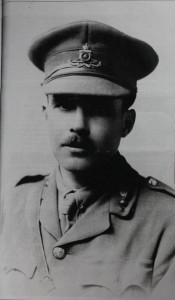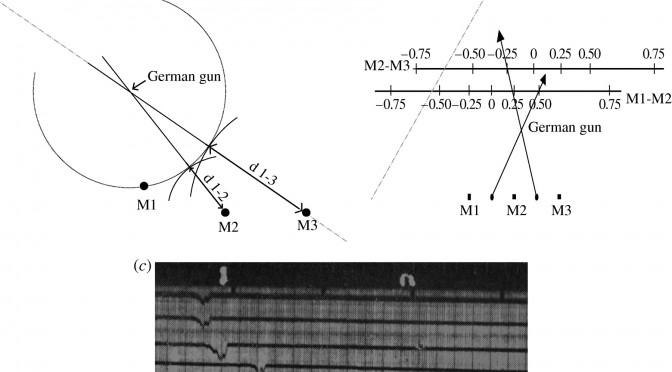100 years ago this autumn a visit to the lavatory by a Gunner Subaltern led to a breakthrough in military science. Archimedes had his inspiration sitting in the bath. Lieutenant William Lawrence Bragg, while sitting on the lavatory .

In 1915 William Lawrence Bragg was a 25 year old subaltern borne in Adelaide Australia. He had joined the Territorial Army while a Cambridge under graduate. when war broke out was a Second Lieutenant in the Leicestershire RHA. He was a brilliant mathematician and physicist who discovered in 1912 what is known as Bragg’s law of X-ray diffraction; the basis for the determination of crystal structure. In September 1915 he was awarded the 1915 Nobel Prize for Science, jointly with his father, William Henry Bragg. He is still the youngest ever recipient of the prize.
In 1915 Bragg was working on a key problem facing the artillery on the Western front. How to locate enemy artillery. One of the most promising technologies was to use the sound of the gun. But it was not easy to pick out the sound of the gun firing from the shock wave of the shell breaking the sound barrier, the crack from the thump. Nor did they know how much of the energy generated by a gun firing was transmitted as low-frequency sounds, too low to be audible.
The breakthrough came when Bragg was in the lavatory in his billet in Flanders. This was a a small room, with a door, but no window. When the door was shut, the only connection to the outside world was the pipe leading from under his toilet seat. There was a British six-inch gun about 400 metres away. When it fired, his bare bottom was actually lifted off the toilet seat by the inaudible infra-sound energy, even though he could often hear nothing at all. So now he knew there was enormous energy in the inaudible infra-sound.
It took a second eureka moment to solve the problem. Corporal W S Tucker, another physicist in Bragg’s team was accommodated in a tar paper hut. There were a couple of holes near his bed space. He noticed that even on a day with no wind or sound, annoying puffs of air would blow onto his face. He and Bragg compared notes and they deduced that these were the result of low frequency sound from artillery. He made a detector out of a wooden ammunition box, which became known as the Tucker microphone.
This led to the development of microphones to record the inaudible frequencies making it possible to develop sound ranging as a way to locate enemy guns to within 50metres. The same technology, applied in a slightly different way made it possible to measure the the muzzle velocity of individual guns, which made it easier to predict fire. Together these technique was used to devastating effect from 1917 onwards. For example at Cambrai 20 November 1917 a barrage of 1000 guns fired a predicted fire plan and hitting enemy guns located by sound alone. Bragg shared the results of his work with his father. Bragg senior was working for the Admiralty on acoustic detection and the result was ASDIC, an echo locating system to detect submerged submarines.
Bragg ended the war with an OBE, MC and three mentions in dispatches. He went on to have a very distinguished scientific career, including the announcement of the discovery of DNA. Bragg is probably the only serving soldier to receive the Nobel prize for Science.
http://www.abc.net.au/science/articles/2015/03/10/4188332.htmhttp://www.europeana1914-1918.eu/en/contributions/18653
https://en.wikipedia.org/wiki/Sound_ranging
www.gunnertours.com


